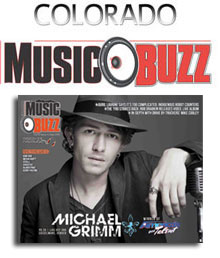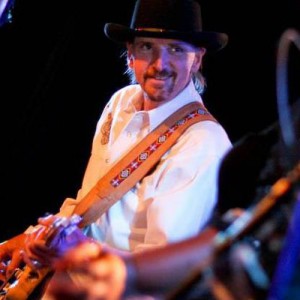The Manager’s Corner- February
I’ve managed my own band for 31 years and I’m in the Colorado Music Hall of Fame. All that’s nice but today’s music business is changing at light-speed and you have to be more engaged in the ‘biz’ than ever. Some things have not changed, careers are still built on some tried and true elements: great music, performance and timing. But today’s artists must work harder than ever to succeed. The good news is that we have new tools to help young musicians grow their fan base. The book I wrote for the course I teach at CU Denver on artist management is called “DIY: You’re Not in it Alone.” While you are ultimately responsible for your own career, these days it’s essential to make the most of all the help that is offered along the way.
Usually my articles are ‘stand alone’ but this month I am writing to continue a topic I brought up in January. In the 1980s bands in Denver, Colorado could play 300 nights a year. How you might ask? Simple, there were 12 or more clubs on the Front Range that “played” bands for between three to six nights. That’s right one band – (not the typical 3 bands a night) played at the same club for six nights in a row … sometimes for a two-week engagement! Herman’s Hideaway played one band for three nights (not three bands for one night), Basins Up in Larimer Square played bands for six nights and acts like Freddi Henchi would play back-to-back six night stands. In Denver there was also Cajun’s Warf that played 6-nights, The Little Bear in Evergreen played one band for 6-nights and bands like Chris Daniels & The Kings did two weeks in a row. In Boulder the Walrus and JJ McCabes were 3-night gigs. The Blue Note was a 3-night gig and in Ft. Collins Dirty Sams (later Sams Old Town Ballroom) was a 6-night gig. In the mountains there was Meeche’s Mogul that was a 6-night gig as was HP Cassidy’s and Dainers. In Winter Park the Slope played bands 6-nights and the Snake River Saloon in Keystone was a 6-night stand. There were clubs in Durango, Colorado Springs, Vail, Aspen and Steamboat that all played bands for multiple nights. A smart bandleader or booking agent could put together a 12-week rotation playing 50 weeks a year. In those days building a fan base was not the only result of this system. The biggest advantage for the band was that they perfected their stage show. They either got really good at keeping dancers on the dance floor and being an entertainer (not just a musician) or they didn’t get asked back.
Compare that with today. Herman’s Hideaway, Lions Lair, Toad Tavern, 3 Kings, The Bluebird, and too many others to name, typically have three bands and sometimes as many as five bands in one night. There are some clubs that do multiple nights – specifically Black Hawk casinos like the Monarch and some country rooms but they are the exception to the rule. And the same is true for DJs in the area: multiple DJs doing sets through a given evening instead of one DJ for the night or even a DJ for more than one night. Artists under the old system needed to have three hours of music that was smoking hot, not just enough to make it through a 30 minute set. But the old system is gone.
How do young artists in 2015 get enough time in front of an audience to get really good at performing? How do they build a fan base that will come out night after night to dance and party with the band? Right now an artist that is doing a lot of gigs in Colorado may rack up 70 gigs in a year – and that is less than two days of playing a week. So smart artists are finding ways to use versatility as a way to get in more playing time and more time in front of an audience. Same goes for DJs. Smart artists are testing songs at open mics and doing off-night shows with parts of the band (duo or trio playing acoustic versions of their songs). DJs are doing private parties, weddings and the like to pay bills and learn about how to program a full night of music – not just one set. It’s not as easy as it sounds. My dear friend Hazel Miller does everything from church gigs to touring with Big Head Todd as a backup singer. She’s hosted Karaoke nights, her jazz trio and sung the national anthem all over the place. I’m not sure I would classify Hazel Miller as a young artist but by being versatile she builds her sage chops and makes a living playing music fulltime. If you have ever had the joy of going to one of her shows you will discover that she “works” an audience about as well as any performer I’ve ever seen and some of that is just simply the “10,000 hour” principle – you become a master at anything you do if you can keep at it (developing your craft) for 10,000 hours. I wish I had a better solution. I wish there was a chance that venues would go back to having bands play for multiple nights but I am afraid that era is over. If you are Tech9 or Garth Brooks and you can sellout three or four nights at the Fillmore or even the Pepsi Center you get multiple plays. But for the most part – that era is gone.
As far as building your fan base the simple answer is the internet. But it is more complicated than that. Social media is beginning to divide along age lines, bloggers are often very specific in what kind of music they cover and you can waste hundreds of not thousands of dollars on “boosting” your internet reach without seeing any tangible results. In a recent article in Digital Music News a teenager commented that Facebook was “dead to me.” There are analytics coming from just about every internet “branding service” and “specialists” who have companies promising to “boost” your visibility – and some actually do that well. When working with the current trends on Instagram, Twitter, ReverbNation, Youtube, Tumbler, Pinster, Facebook and any number of others it’s not always easy to tell the truth from the fiction – or what amount of time and energy to devote to social media for a given band or Kickstarter project. This month my band is doing a Kickstarter funding project for our new album and I have been working with a number of internet specialists. What’s interesting is that despite a lot of time with new Google+ strategies, Linkedin, keywords and the newest trending social media sites, the best results are coming from direct old-fashioned appeals to our fan base through the tried and true methods we have been using for the last two years – mostly Facebook fan-site, Twitter and email blasts from our website. Social media is a fantastic tool but like any marketing plan you need to look at where you will connect with your audience, your fans.
Young artists must know who their followers are and then concentrate their efforts on three to four outlets that have the best chance of creating meaningful interaction with them. It could be a Facebook fan-site with Instagram along with linking those together with your YouTube videos, Twitter and website…or it could be another strategy altogether. Where does your “act” or music intersect with fans on the internet? For example, if you or your music has a broad demographic you will need a Facebook fan-page for the analytics and the ability to go beyond 5,000 followers. Yes, it’s old but according to the top marketing people at AEG (Sara Williams) and Live Nation (Mel Gibson) it’s still the number one tool for marketing shows (no matter if it’s EDM or country). A Facebook fan-site has many tools available to help you analyze the “engagement” of your fans. On the other hand if you are living and working in the world of cutting edge music (punk to hardcore to EDM) and your demographic is in the 15 to 30 age group, Facebook is probably not your best bet. Whatever your “connecting point” to intersect with your fan base is – it takes a ton of effort and time to build a meaningful network of followers. But hey, what else you gonna do? You are not able to develop the fan base through 300 nights of gigs. You will have to learn time management because of all the interactions necessary to maintain those connections and engage your fans. You have to think about your strategy. I can’t prescribe the best coalition of outlets for your project. What I can promise you – is that if you create a ‘plan’ for maximizing the time you spend and you use all the tools that best suit your fan base – you will get the best results that are possible for your music
And this is the new reality. Instead of working 300 shows a year – you will most likely max out in your market playing 50 or 100 shows a year. You have to build both your performing chops, through as many varied gig possibilities as you can dream up — and you also have to build your fan base through wise use of the internet and social media. There are a ton of books and articles about the best practices for marketing and connecting on social media – from best times to post to how to engage your fans by talking about them as well as yourself. All of that is good information and if you contact me I am glad to make some suggestions. Your fans expect a two-way communication not just advertisements and a monologue about your next gig. They want you to like their interests and their band and their post about their favorite guitar-playing cat not just blindly show up at your next gig. Take some time and learn, even if you think you know it all. It’s changing faster than we can dance – and we are all dancing as fast as we can.
Category: Shop Talk






